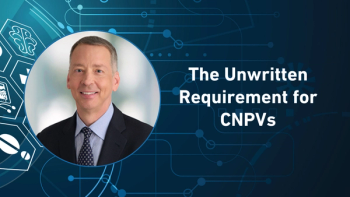
- Pharmaceutical Commerce - April 2009
Drug Wholesalers and the Generic Price War
While the drug wholesaling industry appears reasonably healthy right now, the ongoing generic drug price war among retail pharmacies will create the risk of reduced wholesaler profitability. Understanding this dynamic is crucial for predicting the future of wholesaler relationships with manufacturers and pharmacy customers.
Total revenues from the drug distribution divisions of the three largest wholesalers were $255.8 billion in calendar year 2008, up 5.8% versus calendar year 2007. Although profit margins have come down in recent years, operating cash flows are up sharply since wholesalers began reducing inventory levels in 2003. Wholesalers have used the extra cash flow to buy back about $15 billion of shares, repay debt, and fund acquisitions. Return on Assets (ROA) has increased in part because the ROA denominator (inventory assets) has dropped sharply.
Drug wholesaler revenues are linked most closely to sales of brand drugs at retail pharmacies. Revenue growth from these products will slow during the next five years as an estimated $70 billion of current branded product revenues is converted to generic revenues during the next four years.
Despite the revenue impact of brand sales, more than 60% of drug wholesalers’ gross profits come from generic drugs. The coming wave of generics should provide an initial boost to wholesaler profitability because generic drugs offer higher gross profit margins to wholesalers. Wholesalers also have the opportunity to earn higher returns on invested capital because generic inventory costs reduces balance sheet inventory assets compared to an equivalent amount of branded drugs.
Consolidating pharmacies
However, there will be countervailing pressure on wholesaler’s profit margins from generics as the pharmacy industry changes. The ongoing consolidation of the pharmacy industry pressures wholesaler profit margins from generic drug distribution. The top six dispensing pharmacies — CVS Caremark, Walgreens, Medco Health Solutions, Rite-Aid, Wal-Mart, and Express Scripts – now account for more than half of all dispensed prescriptions.
The biggest chains act as their own wholesaler because they have developed self-warehousing capabilities for distributing drugs to individual stores from the retailer’s own warehouses. They typically bypass wholesalers to buy generic drugs directly from manufacturers, although most chains still use drug wholesalers for the warehouse logistics of brand drugs.
Right now, pharmacies are fighting a retail price war over certain generic drugs. Wal-Mart launched its $4 generic drug program in September 2006. Non-pharmacy retail chains — supermarkets and other mass merchants – quickly followed Wal-Mart’s move. These retailers have been able to absorb lower generic margins because pharmacy represents a minority of their sales and gross profits. In 2008, the three large pharmacy chains were forced to respond and launch their own low-cost generic programs.
Discount generic programs have two primary effects on wholesalers. One, we believe that retail market share is shifting away from wholesaler-supplied dispensing channels, especially independents, small chains, and other non-self-warehousing retailers. Independent pharmacies, which rely on drug wholesalers for 98 percent of their drug purchases, are an ever-smaller part of drug dispensing. Two, pharmacy customers require more aggressive pricing from wholesalers in order to remain competitive with the larger chains that are buying directly from manufacturers.
Pressure on generic pharmacy profits will also increase as payers learn more about channel economics. When generic dispensing rates (GDR) were 20%, payers did not pay much attention to the costs or margins associated with generic drugs. But GDRs are almost 70% and rising, which means that pharmacy channel costs and margins for generic drugs will be increasingly seen as a mechanism to control drug spending. The large volume of upcoming generics will focus even more payer attention on hidden economics of the channel, such as the profits on generic drugs earned by wholesalers and others.
> © 2009 Pembroke Consulting, Inc.
Adam J. Fein, Ph.D., is president of Pembroke Consulting, a management advisory and business research firm. He writes the popular industry blog www.DrugChannels.net. This article is adapted from Dr. Fein’s 2009 Economic Report on Pharmaceutical Wholesalers.
Articles in this issue
over 16 years ago
Returns Process Proves Presence of Counterfeits in US Supply Chainover 16 years ago
ClearOrbit Rolls Up More Supply Chain IT Processesover 16 years ago
Automating the Business-Development Processover 16 years ago
SAP and Teradata Partner on Data Warehousingover 16 years ago
Supply Chain Planning Takes on An International Flavorover 16 years ago
Global Pharma Sales Growth Will Flatten to 2.5-3.5% in 2009over 16 years ago
Riding the Biotech Financing Rollercoasterover 16 years ago
Rx-to-OTC Switch Market Will Double Its Recent Growth Rateover 16 years ago
Reshaping Biotechnology's Financing Relay RaceNewsletter
Stay ahead in the life sciences industry with Pharmaceutical Commerce, the latest news, trends, and strategies in drug distribution, commercialization, and market access.




